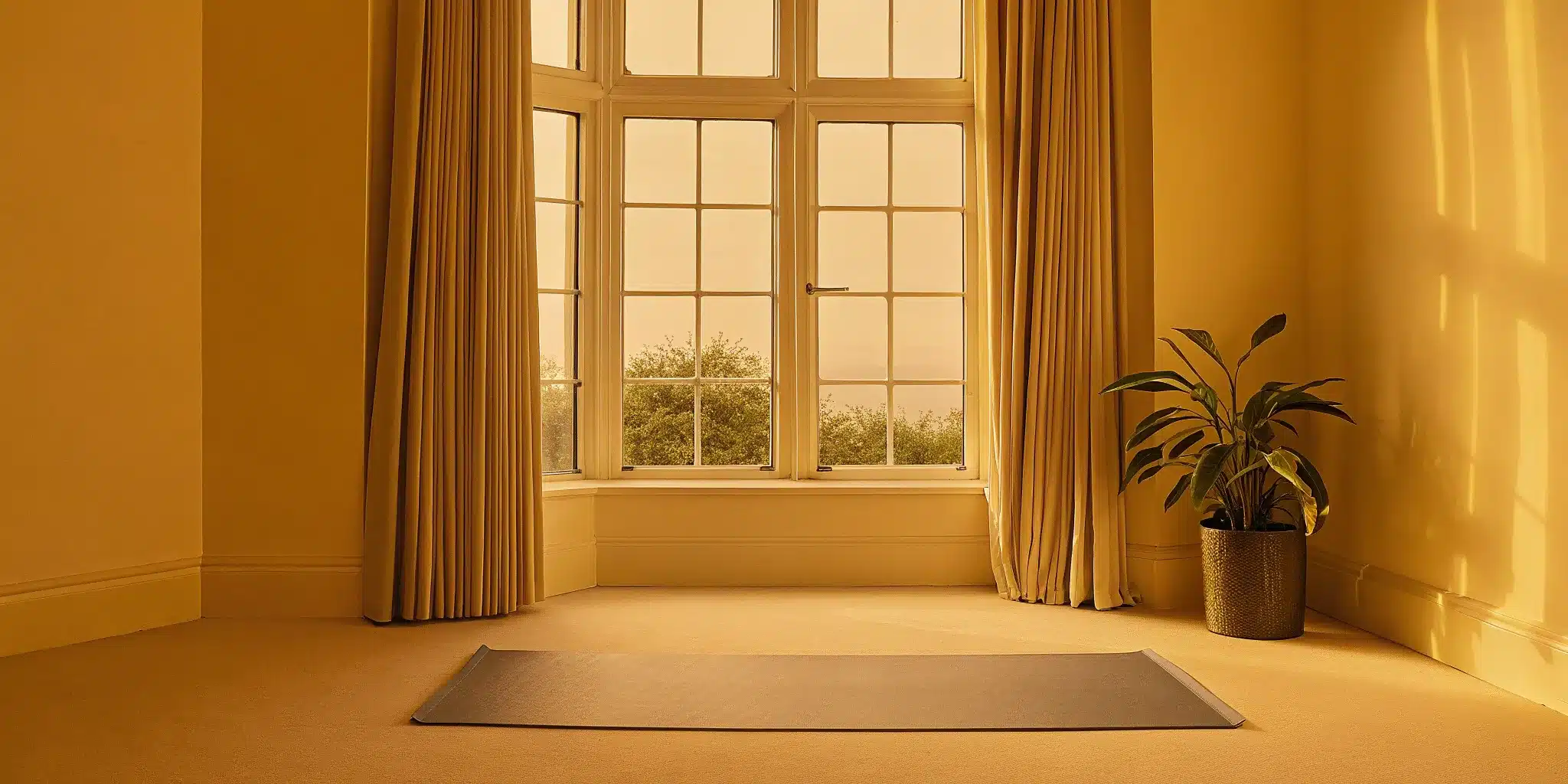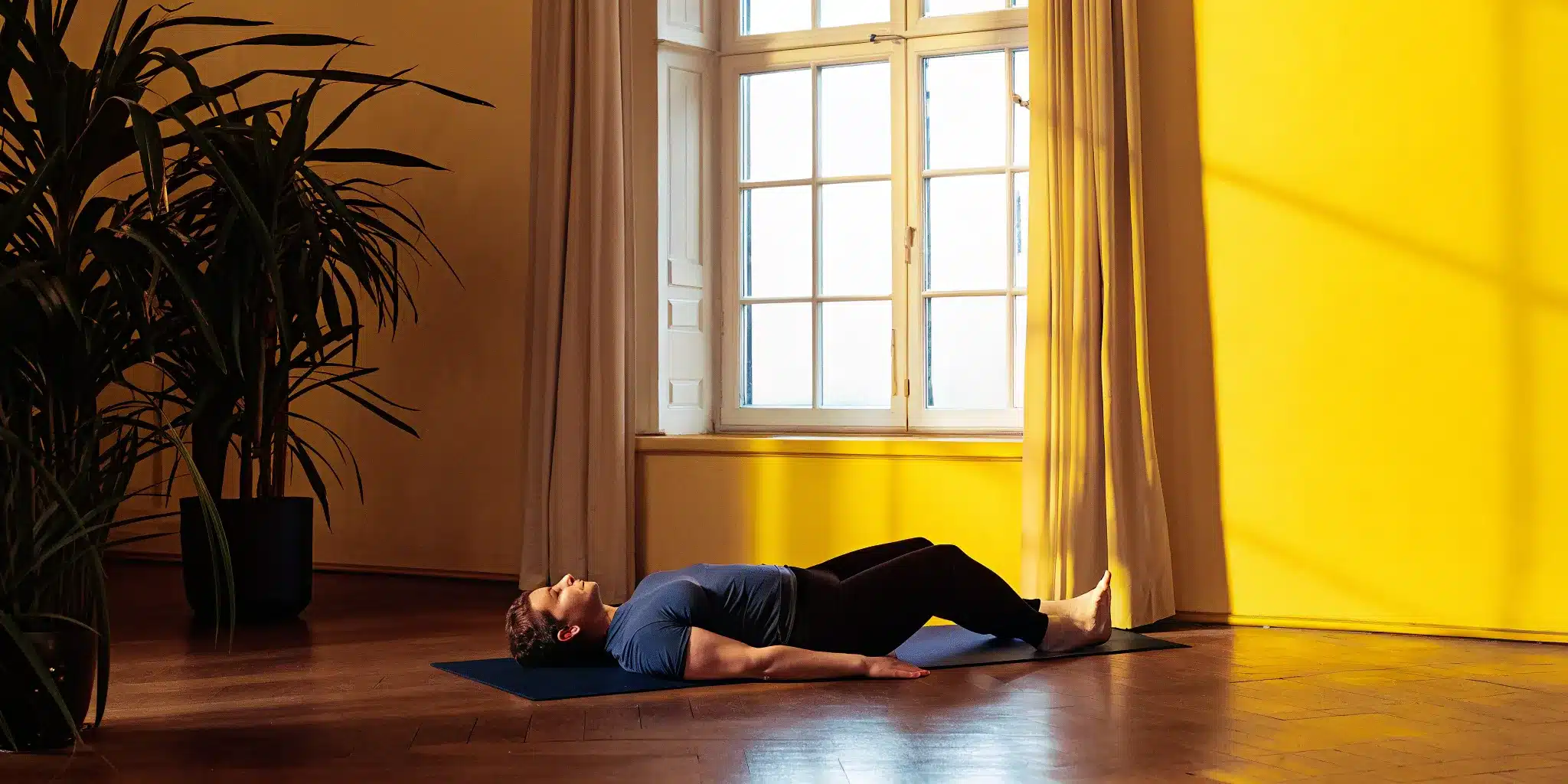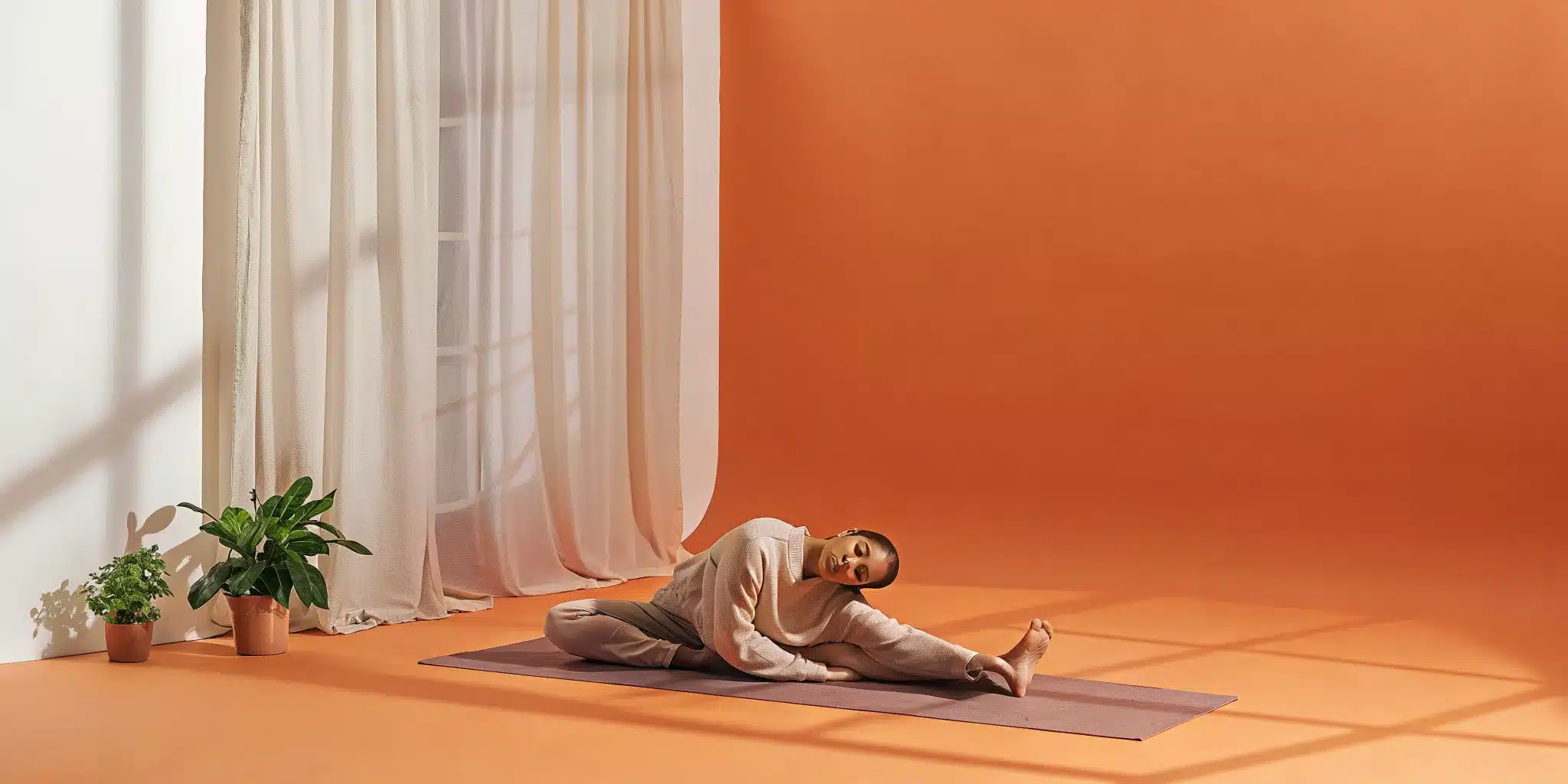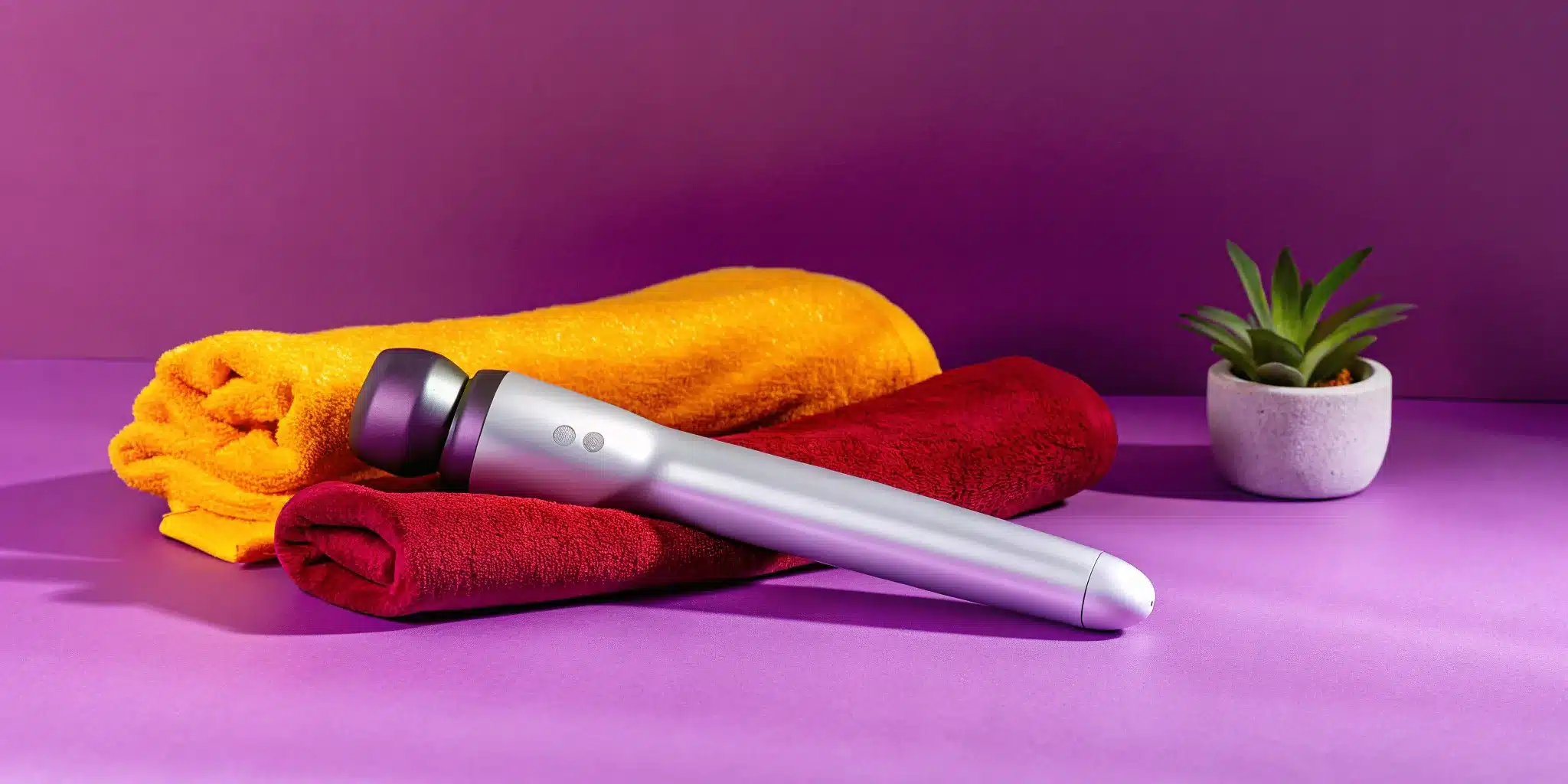That stiff, achy feeling you get after sitting at a desk for a few hours is a signal from your body asking for movement. A quick stretch can provide instant relief, but that relief often fades. It’s easy to wonder if there’s a better way to manage this daily discomfort. Could more frequent, shorter sessions be the answer? Can I stretch 3 times a day to keep my muscles from getting so tight in the first place? It’s a strategy that can work wonders, as long as you approach it mindfully. This guide is designed to show you how to build that habit safely, turning stretching from a single event into a series of small, restorative breaks that support your body all day long.
Key Takeaways
- Stretch in short bursts throughout the day: Breaking up your stretching into several 5-to-10-minute sessions is more effective for managing daily pain and stiffness than one long, infrequent routine.
- Prioritize safety by listening to your body: Always warm up with a few minutes of light movement and learn to distinguish between the gentle pull of a good stretch and any sharp pain, which is your signal to ease up.
- Build stretching into your existing routine: The easiest way to stay consistent is to attach a few minutes of stretching to something you already do every day, like while your coffee brews or during the first few minutes of your favorite show.
Why You Should Stretch More Than Once a Day
If you think of stretching as something you only do for a few minutes before a workout, you might be missing out on its biggest benefits. For those of us dealing with chronic pain, stiffness, or just the general aches that come from sitting at a desk, weaving stretching into your entire day can be a game-changer. Think of it less like a single event and more like a series of small resets for your body and mind. Spreading your stretching into two or three short sessions helps counteract the tension that builds up from daily activities, keeping you more mobile and comfortable from morning to night.
How Stretching Improves Your Physical Health
Consistent stretching is one of the best things you can do for your long-term physical health. Its main job is to promote flexibility, which helps your joints maintain a healthy range of motion. When your joints can move freely, you lower your chances of painful muscle strains and injuries. If you often feel sore or tight, stretching multiple times a day can help release that built-up tension. Instead of letting stiffness settle in your shoulders, back, and hips over an eight-hour workday, a few simple stretches can keep your muscles pliable and ready to move. It’s a simple habit that helps you feel better in your body every single day.
Clear Your Mind and Reduce Stress
Have you ever noticed that when you’re stressed, your shoulders creep up toward your ears? That’s because we hold emotional tension physically. Stretching is a powerful way to let that go. Taking just five minutes to stretch can serve as a mindful pause, allowing you to reconnect with your body and breathe deeply. This simple act can help reduce stress and even improve your posture, which contributes to an overall sense of well-being. By releasing tight muscles in your neck, shoulders, and back, you’re not just easing physical discomfort—you’re also giving your mind a much-needed break, helping you handle daily life with a calmer, clearer perspective.
Move Through Your Day with Ease
The ultimate goal of stretching is to make everyday life feel easier. When your muscles are flexible and your joints have a good range of motion, simple activities like bending down to pick something up, reaching for an item on a high shelf, or playing with your kids become less of a strain. You don’t need to spend an hour at a time to see results, either. Studies show that daily stretching sessions as short as ten minutes can lead to significant improvements in your flexibility. By incorporating a few short stretching breaks into your day, you’re investing in a body that can move freely and without pain, giving you more energy for the things you love.
Is It Safe to Stretch Three Times a Day?
If you’re dealing with chronic pain or stiffness, the relief you feel from a good stretch can make you wonder: if once a day is good, would three times a day be even better? The short answer is yes, it can be incredibly beneficial—but only if you approach it with care and awareness. The goal of stretching is to create length and ease in your muscles, not to force them into submission. Pushing too hard or too often can backfire, leading to muscle strain or injury, which is the last thing you want when you’re already managing discomfort.
The key isn’t just about the number of times you stretch, but about the quality of each session and how you listen to your body’s feedback. A gentle, 10-minute mobility routine in the morning, a few desk stretches in the afternoon, and a relaxing sequence before bed can do wonders for your mobility and pain levels. This approach keeps your muscles pliable and your joints lubricated throughout the day. Think of it less as a workout and more as a series of mindful check-ins with your body. When done correctly, frequent stretching can be a safe and powerful tool for managing pain and moving well.
Listen to Your Body’s Signals
Your body is constantly sending you signals, and learning to interpret them is the most important part of any stretching practice. If a stretch feels good and offers a sense of release, that’s a green light. But if you feel sharp pain, pinching, or serious discomfort, that’s your body’s way of saying, “Stop, this is too much.” Pushing through that kind of pain is never a good idea. True progress comes from consistency and patience, not from forcing a position your body isn’t ready for. Some days you’ll feel more flexible than others, and that’s completely normal. The goal is to work with your body, not against it.
Good Pain vs. Bad Pain: Know the Difference
It’s crucial to understand the difference between good and bad pain when you stretch. Good pain feels like a gentle, deep pull or tension in the belly of the muscle you’re targeting. It’s a sensation of lengthening and release that eases as you hold the stretch. Bad pain, on the other hand, is a warning sign. It often feels sharp, stabbing, burning, or electric. You might feel it in your joints rather than your muscles, or it might cause tingling or numbness. If you experience any of these sensations, ease out of the stretch immediately. Ignoring these signals can lead to injury and set you back on your journey to feeling better.
How to Stretch Safely and Avoid Injury
To keep your stretching routine effective and injury-free, always warm up your muscles first. Stretching cold muscles is like trying to stretch a cold rubber band—it’s more likely to snap. A simple five-minute warm-up, like walking in place, doing arm circles, or marching with high knees, is enough to increase blood flow and prepare your body for movement. When you move into a stretch, ease into it slowly and gently. Never stretch to the point of pain, and avoid bouncing, which can cause tiny tears in the muscle. The best way to stretch safely is to hold a position where you feel a gentle pull for 20 to 30 seconds while breathing deeply.
Know When to Adjust Your Stretches
There is no one-size-fits-all stretching schedule. The perfect routine for you is the one that makes you feel good and helps you meet your goals. If stretching three times a day leaves you feeling limber and pain-free, that’s fantastic. However, if you start to feel sore, tired, or overly tight, it might be a sign to scale back. Your routine should be flexible. On a busy day, a single 15-minute session might be all you can manage. On a day when you’re feeling particularly stiff, you might benefit from several shorter sessions. Pay attention to how you feel and be willing to adjust your plan accordingly.
Your Guide to an Effective Daily Stretching Practice
Creating a stretching routine that fits your life is easier than you think. The key is to find moments throughout your day to move your body with intention. By breaking up your stretching into smaller, manageable sessions, you can ease stiffness, reduce pain, and feel more connected to your body from morning to night. Think of it as a conversation with your muscles—a little check-in to see how they’re doing and give them what they need. Instead of seeing stretching as another task on your to-do list, view it as a series of small acts of kindness for yourself. This approach makes the practice feel less like a chore and more like a natural part of your day, helping you build a sustainable habit that truly supports your well-being.
Start Your Day with Energizing Stretches
Instead of hitting snooze one more time, try using those few minutes for a gentle morning stretch. Waking up your body this way can do wonders for your mood and mobility. A simple routine helps your joints maintain their full range of motion, which can lower the chances of pulling a muscle later in the day. You don’t need a full workout; just a few minutes of movement is enough. Try a cat-cow stretch to gently wake up your spine or some simple neck rolls to release any tension from how you slept. It’s a simple, kind way to greet the day and prepare your body for whatever is ahead.
Beat the Midday Slump with Mobility Breaks
That stiff, sluggish feeling that hits around 2 p.m.? You can fight it with a quick mobility break. If you spend a lot of time sitting, your muscles—especially your hips and shoulders—can get tight and sore. Stepping away from your desk for just five minutes to stretch can help counteract this. Regular stretching throughout the day is a fantastic way to maintain and even increase your flexibility. Try a standing quad stretch or a seated spinal twist right in your chair. These small movements break up the monotony of sitting and send a fresh wave of energy through your body, helping you finish your day strong.
Unwind at Night with Recovery Stretches
Your evening routine is the perfect time to release the tension you’ve accumulated all day. A few minutes of calm, restorative stretching before bed can help quiet your mind and signal to your body that it’s time to rest. This practice can improve how you move and feel, making it a powerful tool for daily recovery. Focus on slow, gentle stretches that you can hold for a little longer, like a child’s pose to release your lower back or a gentle hamstring stretch. Pairing these movements with deep breathing can soothe your nervous system, helping you ease into a more restful and rejuvenating sleep.
Focus on Proper Form
When you’re stretching, the goal is to feel a gentle release, not sharp pain. Listening to your body is the most important rule. If you feel any discomfort that’s sharp, stabbing, or tingling, it’s a signal to ease up. Pushing through that kind of pain can lead to injury, which sets you back. A good stretch should feel like a comfortable pull in the muscle. Learning proper technique ensures you’re getting the benefits without the risks. Remember, consistency and gentle persistence are far more effective than forcing a stretch your body isn’t ready for.
How to Breathe While You Stretch
Your breath is one of the most powerful tools you have for an effective stretch. Holding your breath can cause your muscles to tense up, which is the opposite of what you want. Instead, focus on slow, deep, and steady breathing. A great rule of thumb is to inhale as you get into position and then exhale as you deepen the stretch. This simple technique helps your muscles relax and lengthen more easily. It’s also a good reminder that your muscles stretch best when they’re warm. Even a few minutes of light walking before you stretch can make a huge difference in your flexibility.
Build Your Daily Stretching Routine
Creating a consistent stretching routine is one of the best things you can do for your body. It doesn’t have to be complicated or take up hours of your day. The key is to build a practice that feels good, fits your lifestyle, and addresses your body’s unique needs. By focusing on a few core principles—like warming up properly and choosing the right stretches for the right time—you can create a simple yet powerful habit that helps you move better and feel your best every single day. Let’s walk through how to put together a routine that works for you.
Why You Should Always Warm Up First
Jumping straight into deep stretches when your muscles are cold is a recipe for injury. Think of your muscles like a rubber band: if you try to stretch a cold, stiff rubber band, it’s more likely to snap. But if you warm it up first, it becomes pliable and elastic. The same goes for your body. Taking just five to ten minutes to warm up increases blood flow to your muscles, making them more flexible and receptive to stretching. A simple warm-up could be a brisk walk, marching in place, or doing some gentle arm circles. This small step makes a huge difference in the effectiveness and safety of your routine.
When to Use Dynamic vs. Static Stretches
Not all stretches are created equal, and timing is everything. The two main types of stretching are dynamic and static. Dynamic stretches involve active movements that take your body through a full range of motion—think leg swings or torso twists. These are perfect for your warm-up because they prepare your muscles for activity. Static stretches are what most people picture when they think of stretching: you hold a position for a period of time, usually 20-60 seconds. These are best saved for after a workout or at the end of the day when your muscles are already warm. Holding static stretches helps lengthen muscles and improve long-term flexibility.
How to Fit Stretching into Your Schedule
The idea of adding one more thing to your to-do list can feel overwhelming, but you don’t need a full hour to reap the benefits of stretching. Consistency is far more important than duration. If you want to seriously improve flexibility, aim to stretch at least five to six times a week. You can break this up into smaller, manageable chunks. Try a five-minute routine when you wake up, a few desk stretches in the afternoon, and another five minutes before bed. Attaching this new habit to an existing one—like stretching while your coffee brews—can make it easier to stick with.
Simple Stretches You Can Do at Your Desk
If you spend a lot of time sitting, your body will thank you for taking short stretch breaks. Hunching over a computer can lead to tight hips, a sore back, and a stiff neck. You can counteract this without even leaving your chair. Try a simple seated cat-cow: place your hands on your knees, and as you inhale, arch your back and look up. As you exhale, round your spine and tuck your chin. A gentle neck roll or a seated spinal twist can also work wonders. For a more full-body stretch, find a quiet corner for a Downward Dog, one of the most effective daily stretches for relieving tension.
Track Your Progress and Sidestep Common Pitfalls
Starting a new stretching routine is exciting, but how do you know if it’s actually working? Tracking your progress is key to staying motivated and making sure your efforts are paying off. It also helps you spot what isn’t working so you can adjust your plan instead of giving up. By setting clear goals, understanding the signs of progress, and avoiding common mistakes, you can create a sustainable practice that truly supports your body and well-being.
Set Achievable Stretching Goals
It’s easy to get discouraged if you expect to touch your toes overnight. Instead, focus on setting small, realistic goals that build over time. Your body needs time to adapt, so think in terms of weeks, not days. A great rule of thumb is to formally assess your flexibility every four to six weeks. This gives you a clear picture of how you’re progressing without the pressure of daily measurements. Maybe your goal is to sit on the floor more comfortably or to reach the top shelf without a twinge in your shoulder. Celebrate these small wins—they’re the building blocks of long-term mobility and pain relief.
How to Tell if Your Stretching Is Working
Progress isn’t always measured in inches. While you may see noticeable improvements in flexibility within a few weeks or months, the most important changes are often felt in your daily life. Are you waking up with less stiffness? Is it easier to bend down and tie your shoes? Maybe you can play with your kids or grandkids on the floor with less pain. Pay attention to these functional improvements. Keeping a simple journal to jot down how you feel each day can be a powerful way to recognize your progress and stay connected to your goals, especially on days when you feel less motivated.
Common Mistakes to Avoid
To get the most out of your routine, it’s important to stretch safely and effectively. One of the biggest mistakes is stretching cold muscles, which can actually increase the likelihood of injury. Always warm up your body first with a few minutes of light movement, like walking or gentle arm circles. Another common pitfall is holding stretches for the wrong amount of time. The ideal duration depends on the type of stretch you’re doing. Instead of following a generic rule, listen to your body. A stretch should create a feeling of gentle tension, not sharp pain. If something hurts, ease up.
Fine-Tune Your Routine as You Progress
As your body becomes more flexible, your stretching routine should evolve, too. What felt challenging in your first month might feel easy by your third. This is a great sign! It means it’s time to gently increase the intensity or duration of your stretches. Studies show that consistent daily stretching for as little as ten minutes can lead to significant improvements in your range of motion. You might try holding a stretch for a few extra seconds or incorporating a new movement that targets a tight area. The key is to keep your body guessing and continue making gradual progress toward your goals.
Make Stretching a Lifelong Habit
Turning stretching into a consistent part of your life isn’t about adding another chore to your to-do list. It’s about weaving small, feel-good moments into your day that add up to significant relief and greater freedom of movement. The secret to long-term success is finding a rhythm that works for you, not forcing a rigid, one-size-fits-all plan. By connecting stretching to your existing routines and learning to adapt when life gets busy, you can build a sustainable practice that serves your body for years to come. It’s about progress, not perfection, and celebrating the small wins along the way.
How to Safely Increase Your Flexibility
You don’t need to spend an hour twisting yourself into a pretzel to see results. The key to safely improving your flexibility is consistency, not intensity. Think of it as giving your muscles small, frequent reminders to relax and lengthen. Aiming for just three to five minutes of gentle stretching a few times a day can be incredibly effective. This approach keeps your muscles pliable without overwhelming them. Listen to your body and never push into sharp pain. The goal is to feel a gentle pull, not a strain. Regular, short sessions are far more beneficial than one aggressive stretch a week.
Pair Stretching with Your Favorite Activities
The easiest way to build a new habit is to attach it to one you already have. This is called habit stacking, and it works wonders for stretching. Do you start every morning with a cup of coffee? Use the time it takes to brew for a few gentle neck and shoulder rolls. Do you unwind with a TV show at night? The opening credits are a perfect cue to get on the floor for a hamstring or hip stretch. Making stretching a regular habit can improve how you move, how you feel, and how you handle daily life, especially when it becomes a seamless part of your favorite rituals.
How to Stay Motivated to Stretch
Motivation often comes from feeling good, and stretching is a direct path to that feeling. Instead of focusing on a distant goal like touching your toes, pay attention to the immediate relief you feel after a stretch. Does your back feel less tight? Can you turn your head more freely? These small victories are powerful motivators. If stretching a few times a day brings you relief, that’s a great reason to continue. Remember, consistency is key; regular, gentle stretching is much more effective than occasional intense sessions. Let the feeling of well-being be your guide.
Adapt Your Routine for Busy Days and Travel
Life is unpredictable, and your stretching routine should be flexible enough to handle it. On days when you’re short on time, don’t skip stretching altogether. Instead, break it up into even smaller chunks. A 60-second calf stretch here and a 90-second shoulder stretch there can make a huge difference. You can spread out your stretching throughout the day in these short intervals. If you’re traveling, simple hotel room stretches can combat stiffness from planes or cars. While daily stretching is a fantastic tool for self-care, remember it’s a complement to, not a replacement for, professional guidance when you’re dealing with persistent pain.
Frequently Asked Questions
How long does each stretching session need to be? You don’t need to block out a huge chunk of your day. The real magic comes from consistency, not duration. Spreading your stretching into two or three short sessions of just five to ten minutes is often more effective than one long session once a week. Think of it as giving your body small, frequent resets to counteract the tension that builds up from daily life.
Is it better to stretch in the morning or at night? Both times offer unique benefits, so you don’t have to choose just one. A morning stretch is fantastic for waking up your body, easing stiffness from sleep, and preparing your muscles for the day ahead. An evening stretch helps you release the physical and mental tension you’ve accumulated, calming your nervous system and preparing you for a more restful sleep.
I have chronic pain. Will stretching multiple times a day make it worse? When done correctly, frequent and gentle stretching can be an incredible tool for managing chronic pain. The key is to be mindful and work with your body, not against it. Always ease into a stretch slowly and never push into sharp, stabbing, or electric pain. A good stretch feels like a gentle pull that releases tension. If you listen to your body’s signals, stretching can help soothe your muscles and improve your mobility without causing a flare-up.
How quickly will I notice a difference from stretching every day? While you might feel immediate relief from stiffness right after a session, long-term flexibility takes time to build. Instead of looking for major changes overnight, pay attention to small improvements in your daily life. You might notice it’s easier to bend down to tie your shoes or that you wake up with less soreness. These functional wins are the first signs your routine is working, with more noticeable flexibility improvements often appearing after a few weeks of consistent practice.
What’s the most important thing to remember if I’m just starting out? The single most important rule is to always warm up your muscles before you stretch. Stretching cold muscles can lead to strain or injury. Just five minutes of light movement, like walking in place or doing some arm circles, increases blood flow and makes your muscles much more receptive to stretching. This simple first step makes your entire routine safer and more effective.








